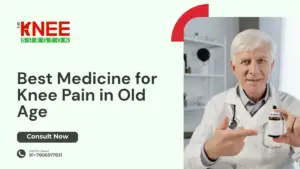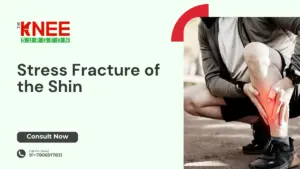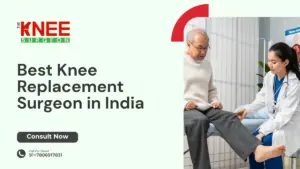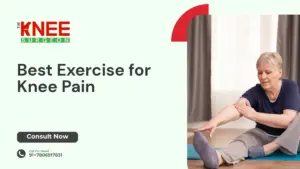As we grow older, our knees often carry the marks of a lifetime of activity from daily walks to household chores. For many seniors, stiffness, aching, or swelling become part of daily life. But it doesn’t have to stay that way. If you’re struggling with knee pain in old age, you’re not alone. Millions experience this discomfort due to aging, arthritis, or past injuries.
In this guide, we’ll explore the causes, symptoms, and the best medicine for knee pain in old age, along with simple lifestyle changes and exercises that can make your golden years more comfortable and active.
What are the Common Types of Knee Pain in the Elderly?
Knee pain in older adults can arise from several conditions, including:
- Osteoarthritis: The most common cause of knee pain in old age, where cartilage wears down, leading to friction and stiffness.
- Rheumatoid Arthritis: A chronic autoimmune condition causing inflammation and joint damage.
- Post-Traumatic Arthritis: Pain and stiffness from old injuries or fractures.
- Tendonitis and Bursitis: Inflammation of tendons or fluid sacs around the knee.
- Degenerative Joint Disease: Progressive weakening of cartilage over time.
Understanding the exact cause helps doctors recommend the best medicine for knee pain in old age tailored to your needs.
What are the Symptoms of Knee Pain in Old Age?
Common symptoms may include:
- Stiffness after resting or waking up
- Swelling or warmth around the joint
- Clicking or grinding sensations
- Pain during walking or climbing stairs
- Difficulty bending or straightening the leg
If these symptoms persist, it’s important to consult a specialist to determine whether natural remedies for knee pain in old age or medical treatment is right for you.
What is the best medication for knee pain?
The best medication for knee pain depends on the cause and severity of the pain, as well as overall health. Common options include:
- Acetaminophen (Paracetamol): Reduces mild to moderate pain, suitable for long-term use in older adults.
- Nonsteroidal Anti-Inflammatory Drugs (NSAIDs): Ibuprofen, naproxen, or diclofenac help reduce pain and inflammation. Use under medical guidance, especially in older adults.
- Topical NSAIDs or creams: Applied directly to the knee for localized pain relief with fewer systemic side effects.
- Corticosteroid injections: Provide temporary relief for severe arthritis or inflammation in the knee joint.
- Hyaluronic acid injections: Help lubricate the joint, reducing pain in osteoarthritis cases.
- Supplements: Glucosamine, chondroitin, or omega-3s may support joint health, though results vary.
Important: Always consult a doctor before starting any medication, as interactions, dosage, and underlying conditions can affect safety and effectiveness.
What Causes Knee Pain in Your 50s?
In your 50s, the body undergoes natural wear and hormonal changes that affect joint health. Common causes include:
- Gradual cartilage deterioration
- Weight gain adding stress to joints
- Previous knee injuries resurfacing
- Muscle weakness and poor flexibility
- Sedentary lifestyle and lack of movement
Starting exercise for knee pain in old age, such as swimming or cycling, helps maintain joint strength and delay further degeneration.
What Risk Factors Cause Knee Pain in Old Age?
Certain factors increase the risk of developing knee pain:
- Aging and natural joint wear
- Excess body weight
- Weak leg muscles
- Family history of arthritis
- Inactive lifestyle
Combining mild exercise for knee pain in old age with the best medicine for knee pain in old age and good nutrition can effectively manage symptoms and prevent further deterioration.
What are the Treatment Options for Age-Related Knee Pain?
Treatment depends on the cause and severity of pain. Common approaches include:
- Best Medicine for Knee Pain in Old Age – Doctors may recommend anti-inflammatory medicines, pain relievers, or joint supplements like glucosamine and chondroitin for cartilage support.
- Natural Remedies for Knee Pain in Old Age – Warm compresses, turmeric milk, herbal oils, and balanced diets rich in calcium and vitamin D can aid recovery.
- Physical Therapy – Gentle movements and strengthening exercises improve flexibility and balance.
- Lifestyle Modifications – Maintaining a healthy weight and staying active prevents further strain.
- Surgical Options – In advanced cases, procedures like knee replacement can restore movement and reduce pain.
Combining medical treatment with natural remedies for knee pain in old age often offers long-term relief.
How Can Knee Pain Be Prevented in Later Years?
- Engage in regular low-impact exercise for knee pain in old age such as walking or swimming.
- Maintain an ideal weight to reduce joint pressure.
- Wear supportive shoes for proper alignment.
- Use warm compresses during winter to keep joints flexible.
- Eat a diet rich in omega-3 fatty acids, calcium, and vitamin D.
- Avoid sitting or standing for long periods without movement.
These preventive habits complement the best medicine for knee pain in old age, promoting mobility and long-term joint health.
Results
With timely care and the best medicine for knee pain in old age, most people experience noticeable relief within weeks. Combined with light exercise, proper nutrition, and regular medical checkups, seniors can regain independence and enjoy a pain-free lifestyle. Remember knee pain in old age is common, but not permanent. With the right balance of natural remedies, professional care, and consistent movement, your knees can stay strong and supportive well into your later years.
Read also: Stress Fracture of the Shin





